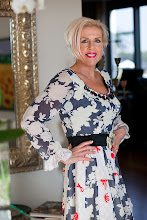 Did you know that in Victorian times, June was considered the luckiest month for a wedding - hence the tradition of early summer weddings? June has always been the most popular month, as it is named after Juno - the Roman goddess of marriage. She would bring prosperity and happiness to all who wed in her month. Practicality was also a consideration since, if married in June, the bride was likely to give birth to her first child in spring, allowing her enough time to recover before harvest time.
June also signified the end of Lent and the arrival of warmer weather, so it was time to remove winter clothing and partake of an annual bath! April, November and December were also favoured months, as they didn't conflict with peak farm working times. October was an auspicious month too, signifying a bountiful harvest. May, however, was considered unlucky. 'Marry in May and rue the day' says an old proverb, but 'marry in September's shine, your living will be rich and fine'.
Did you know that in Victorian times, June was considered the luckiest month for a wedding - hence the tradition of early summer weddings? June has always been the most popular month, as it is named after Juno - the Roman goddess of marriage. She would bring prosperity and happiness to all who wed in her month. Practicality was also a consideration since, if married in June, the bride was likely to give birth to her first child in spring, allowing her enough time to recover before harvest time.
June also signified the end of Lent and the arrival of warmer weather, so it was time to remove winter clothing and partake of an annual bath! April, November and December were also favoured months, as they didn't conflict with peak farm working times. October was an auspicious month too, signifying a bountiful harvest. May, however, was considered unlucky. 'Marry in May and rue the day' says an old proverb, but 'marry in September's shine, your living will be rich and fine'.
 The Victorians were very superstitious about weddings, resulting in many traditions that have since fallen out of favour. Around the turn of the century, it was customary to create a marriage globe in the form of a collection of precious things from the special occasion, usually the bride's wedding crown, flowers and other family momentos inside a large glass dome.
The items chosen to put into the dome were highly symbolic, for instance:
The Victorians were very superstitious about weddings, resulting in many traditions that have since fallen out of favour. Around the turn of the century, it was customary to create a marriage globe in the form of a collection of precious things from the special occasion, usually the bride's wedding crown, flowers and other family momentos inside a large glass dome.
The items chosen to put into the dome were highly symbolic, for instance:
- Oak leaves to represent the longevity of union
- Sheaves of wheat to symbolise the gift of life
- Rectangular mirrors to signify the years of engagement
- A large central mirror symbolic of the reflection of the soul
- Clusters of grapes standing for prosperity
- Roses or daisies representative of love
- Cherries seen as protection from bad fortune
- Ivy indicating attachment to each other
- Chestnut tree leaves signifying links to others
 We have a couple of original antique wedding domes available at ShopCurious. These are beautiful pieces of history and would make a totally unique and very romantic wedding gift. Alternatively, you might simply want to invest in one as a curiously collectable heirloom for future generations, or to decorate your abode in opulent Victorian style? Perhaps you're even inspired enough to make your own modern day version. Are you?
We have a couple of original antique wedding domes available at ShopCurious. These are beautiful pieces of history and would make a totally unique and very romantic wedding gift. Alternatively, you might simply want to invest in one as a curiously collectable heirloom for future generations, or to decorate your abode in opulent Victorian style? Perhaps you're even inspired enough to make your own modern day version. Are you?








No comments:
Post a Comment